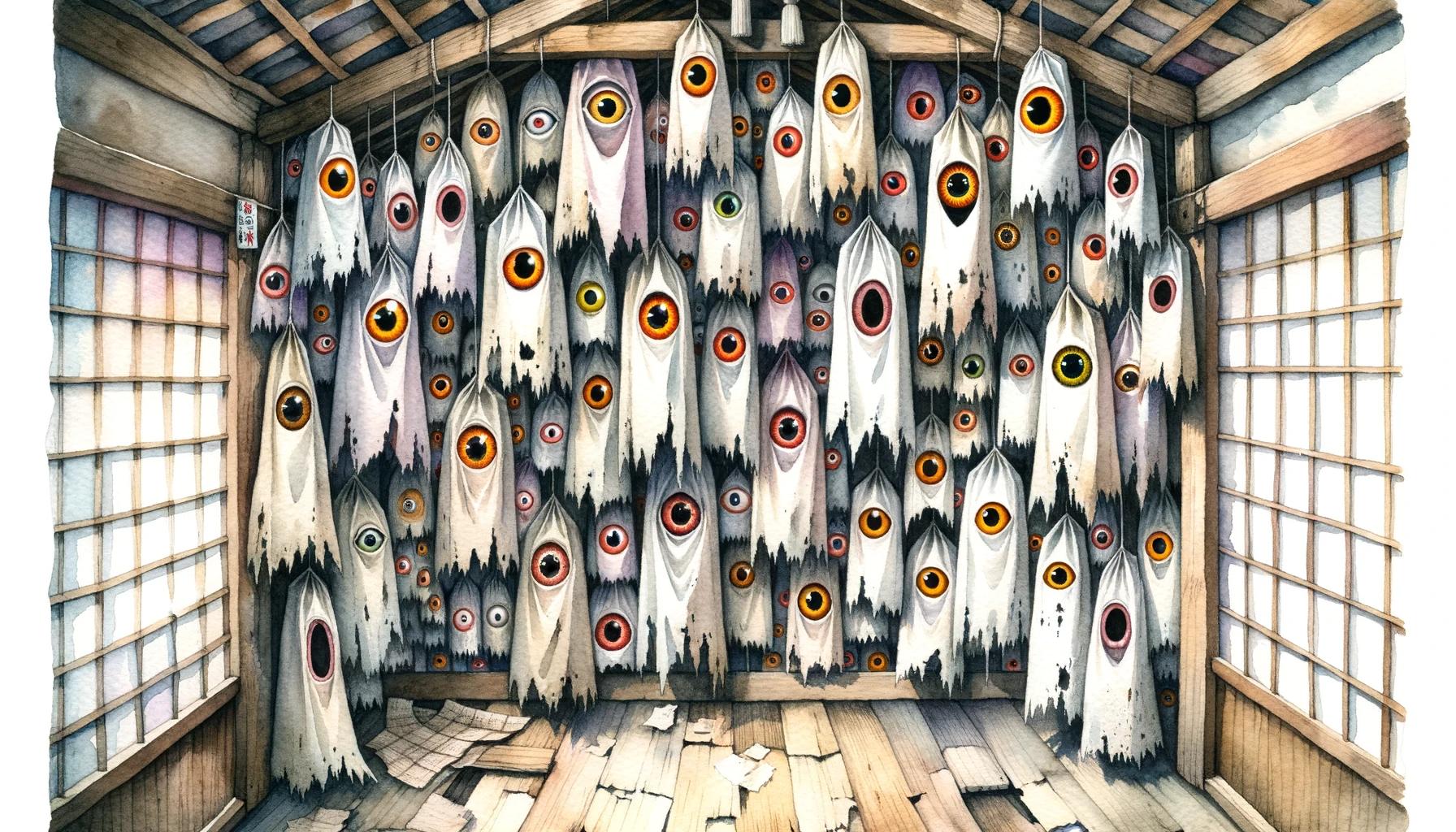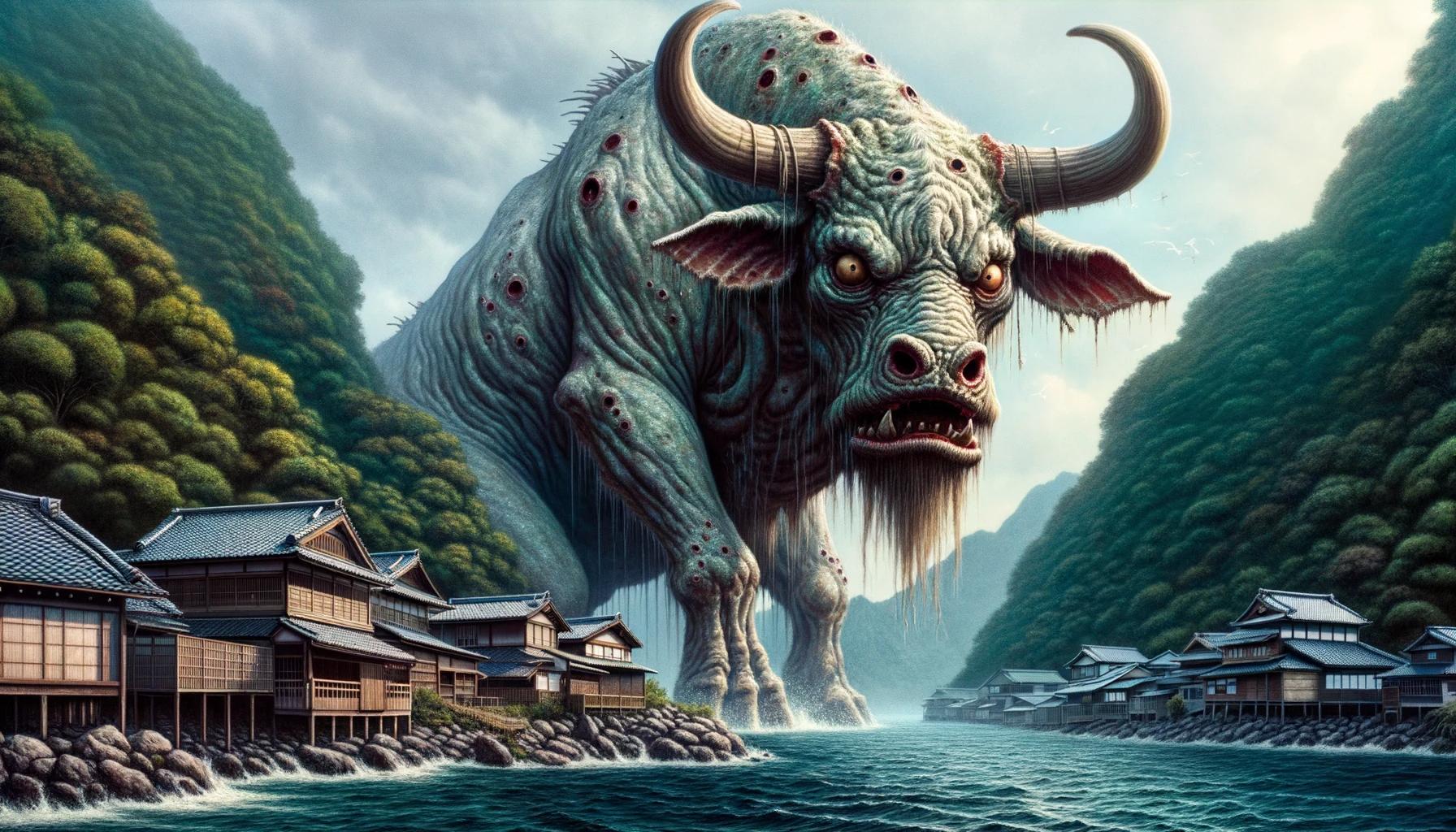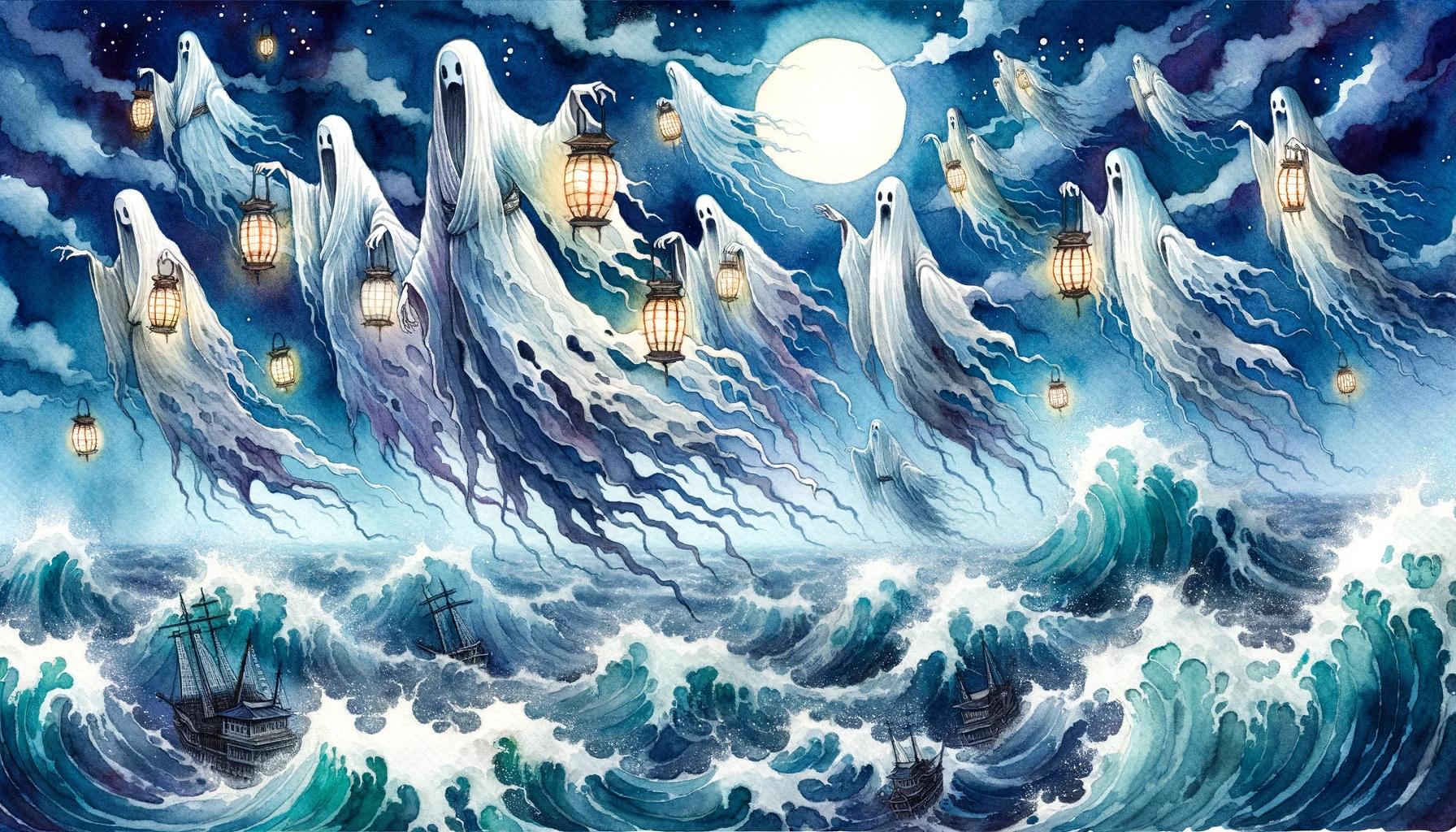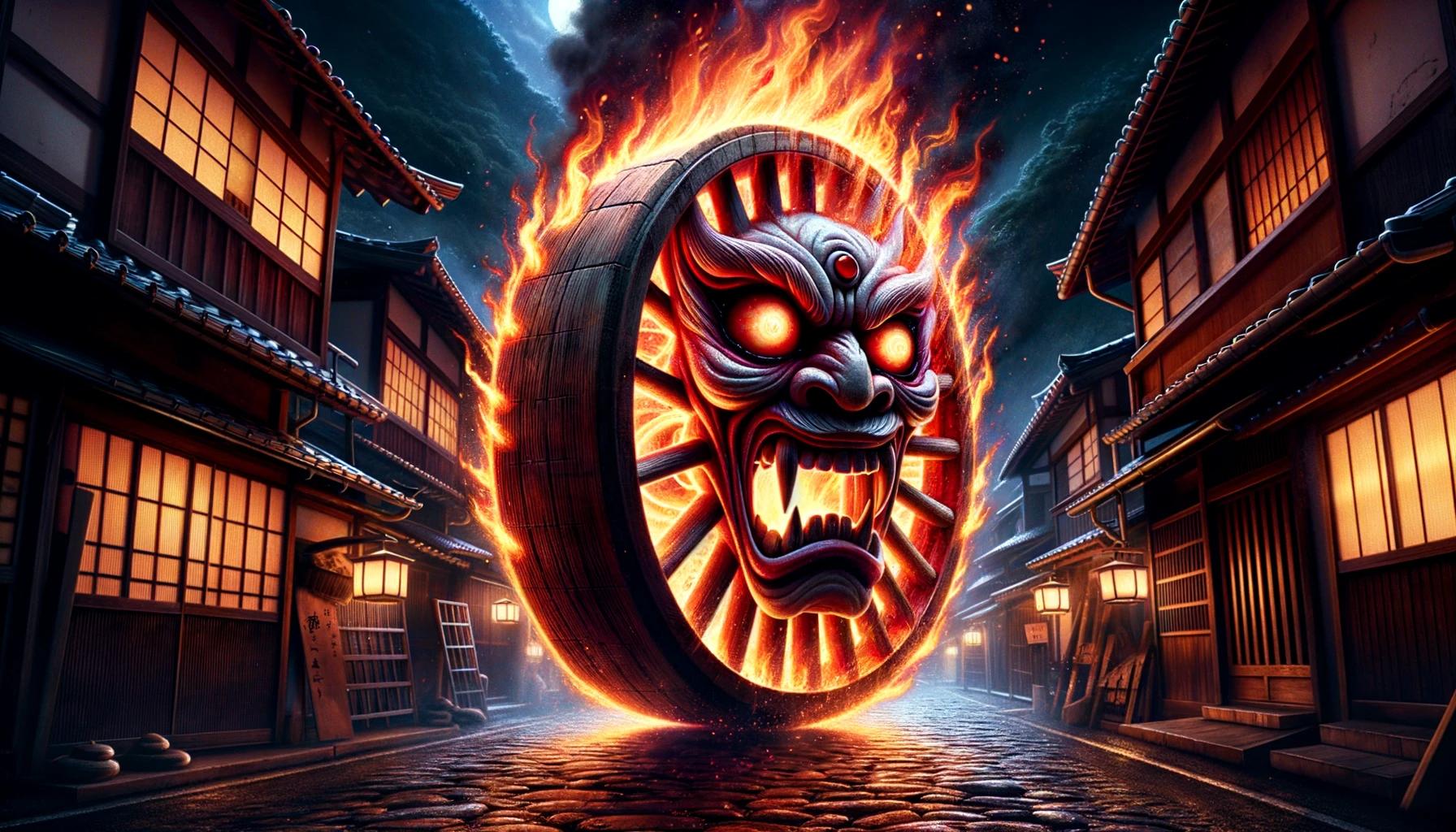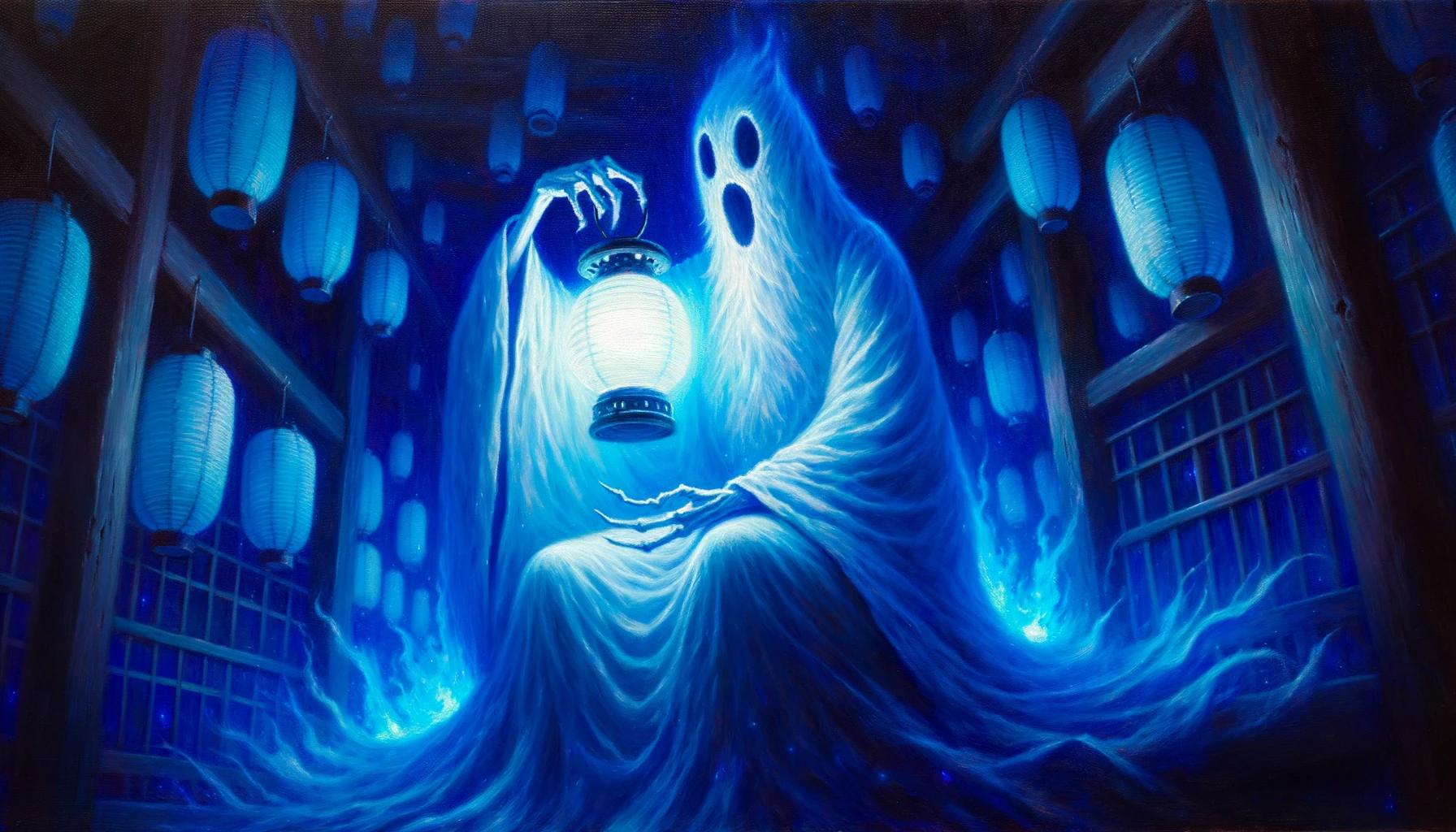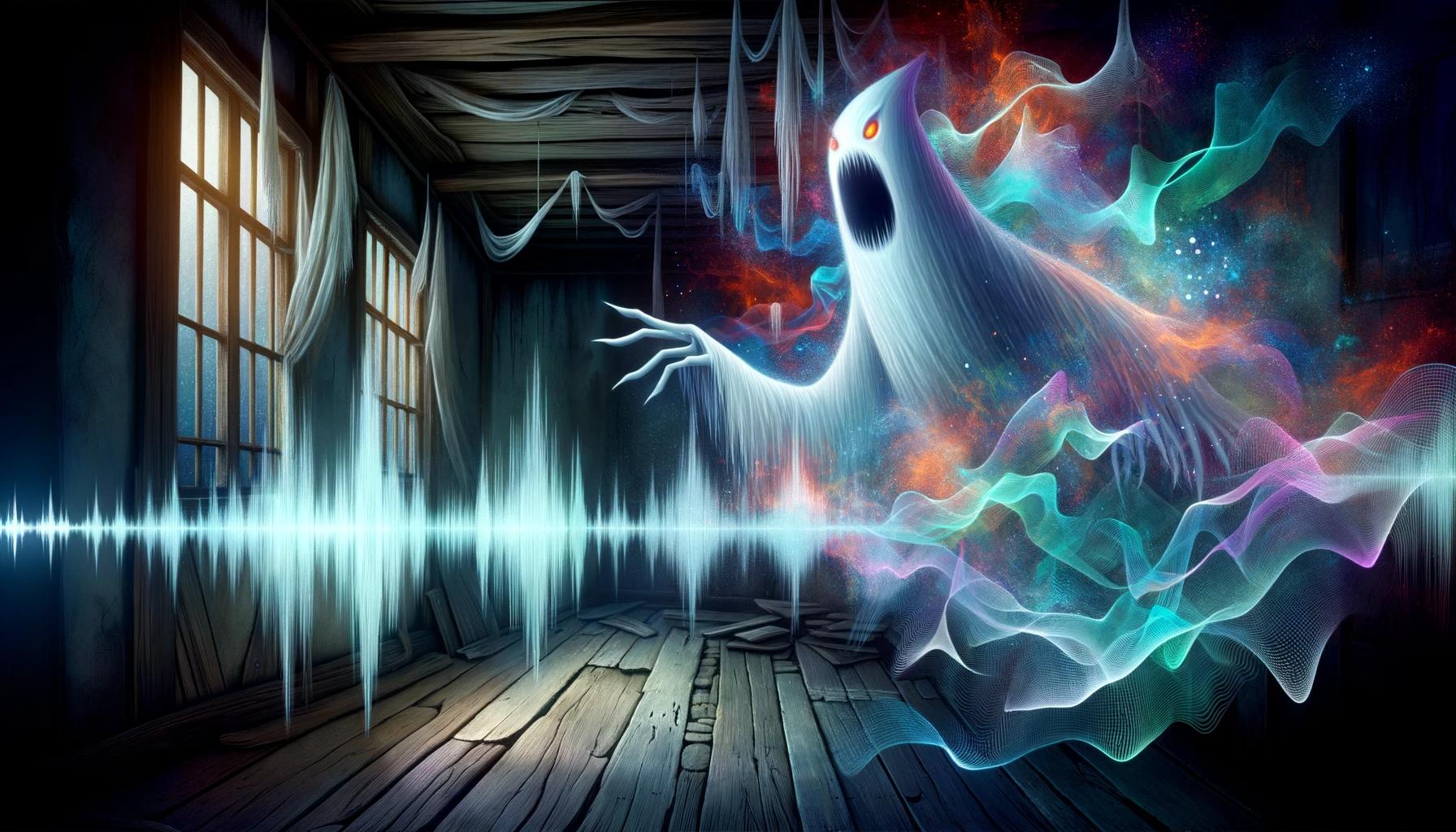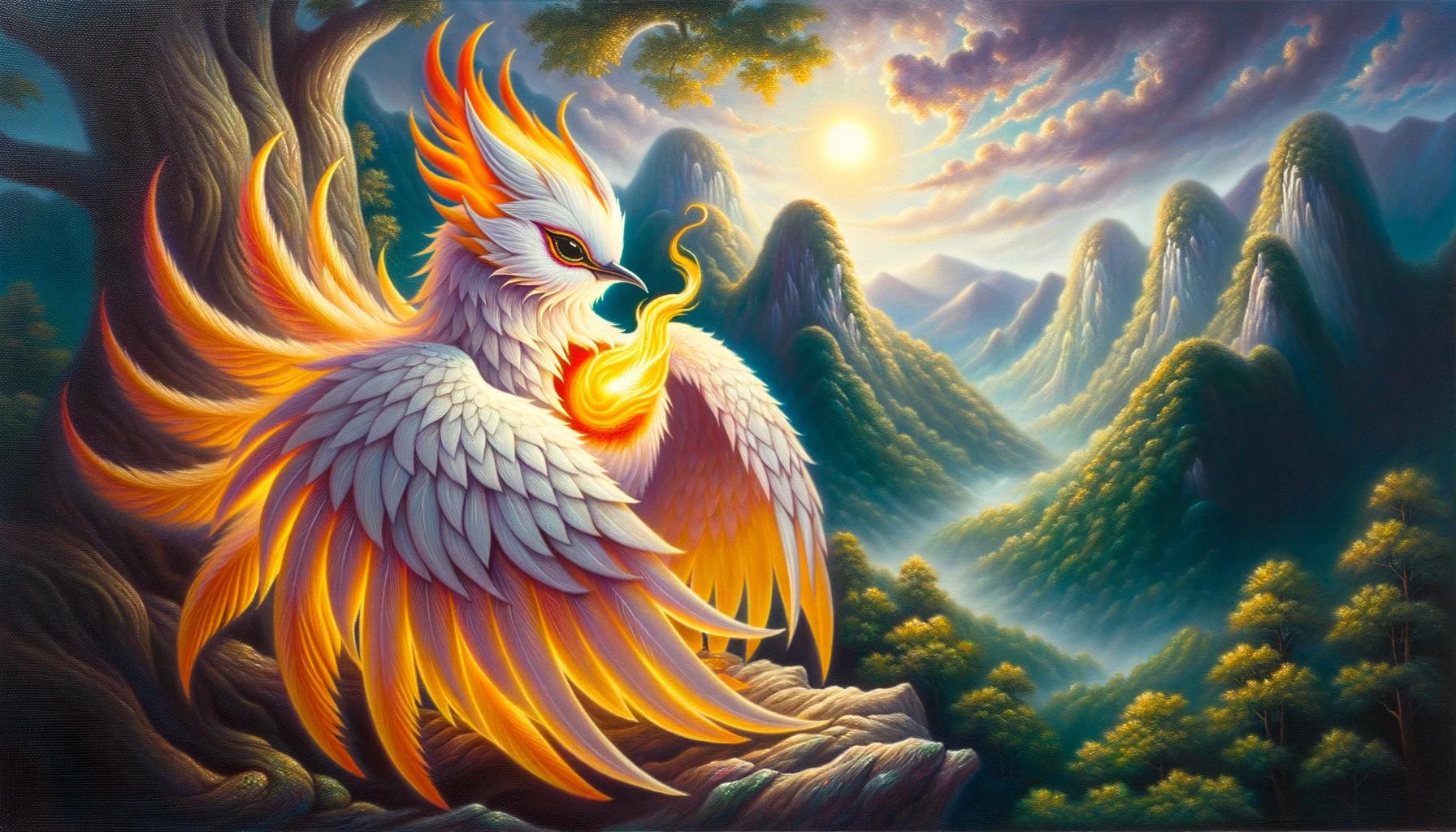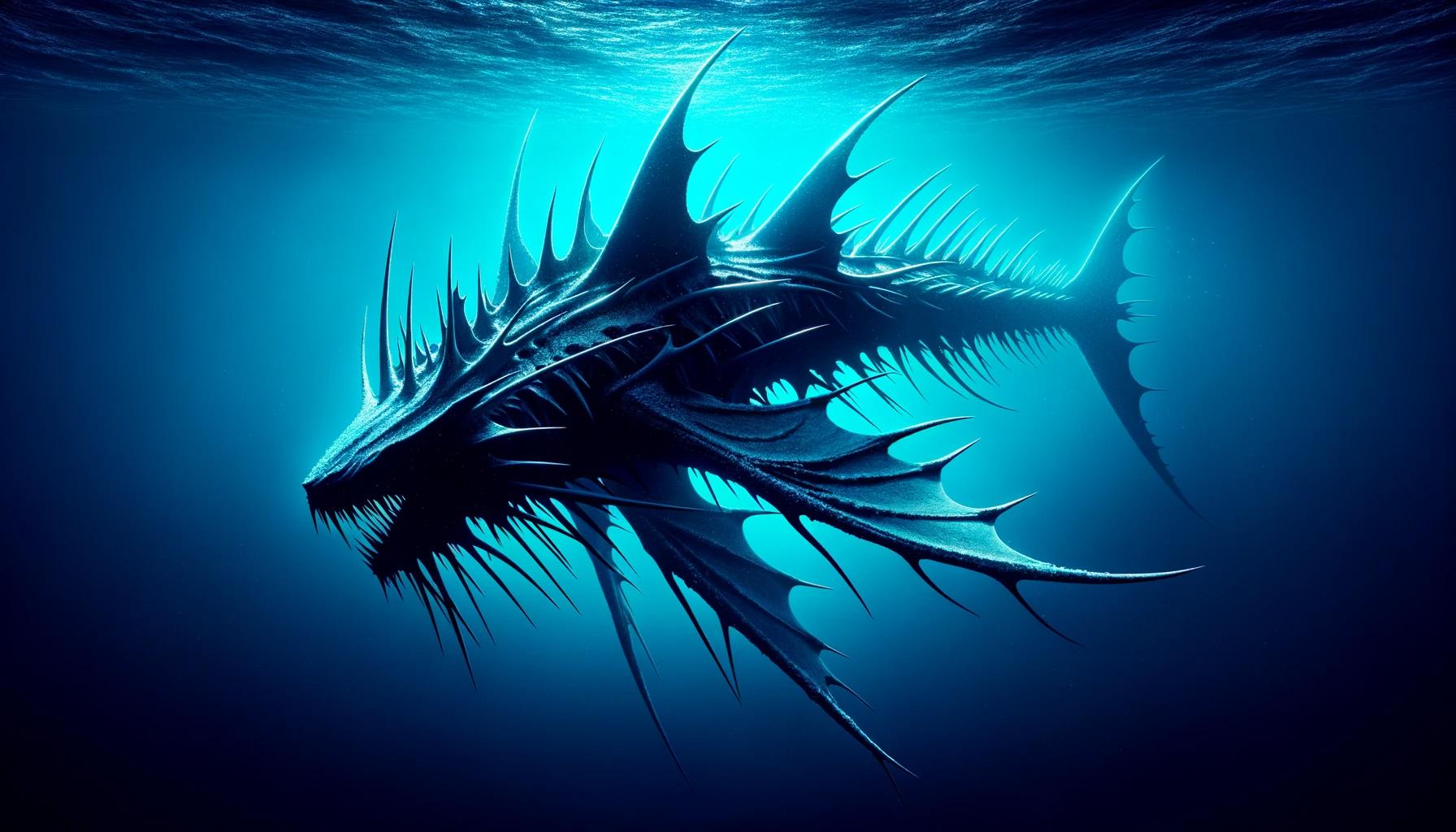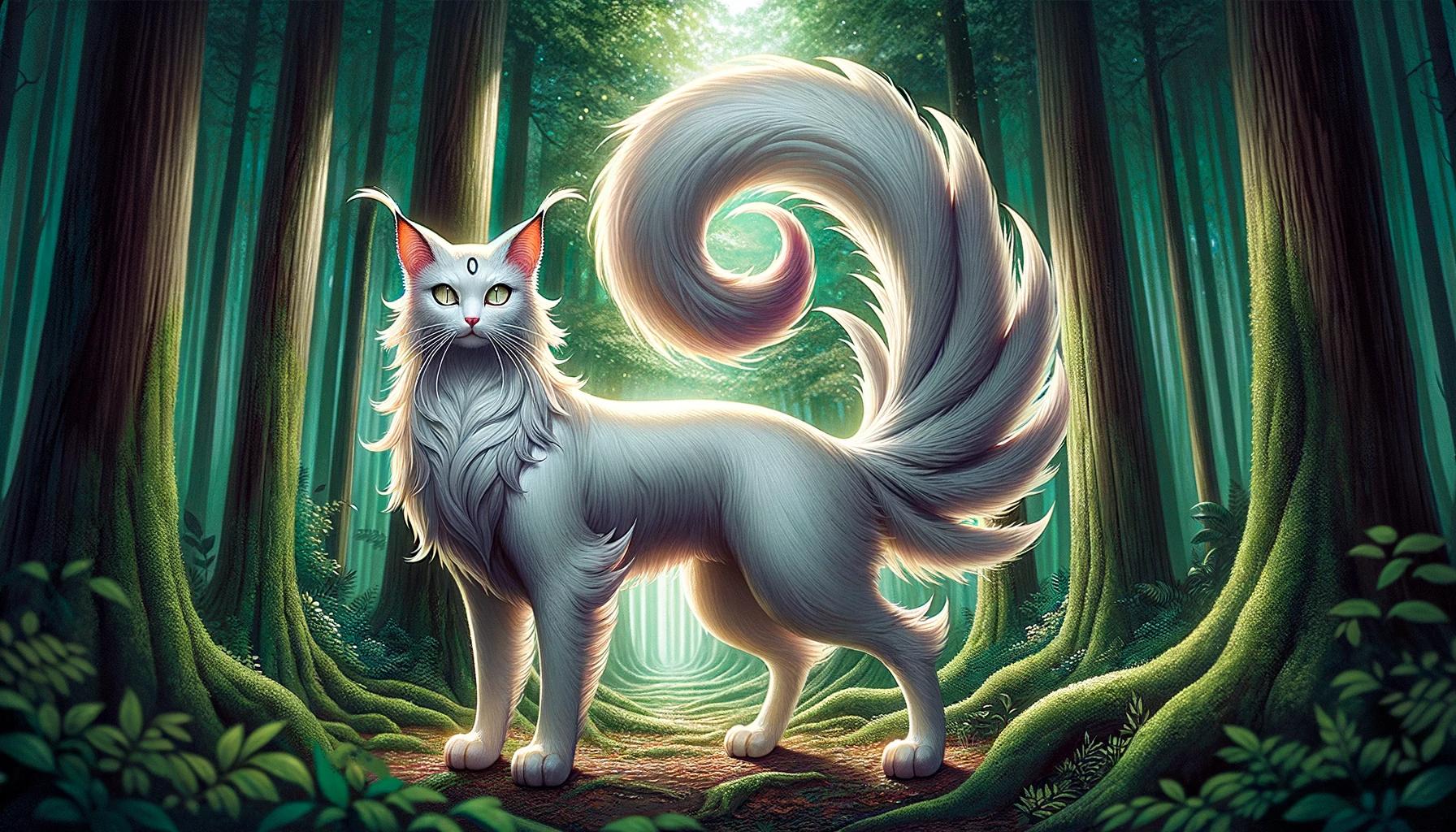Mokumokuren Yokai: The Enigmatic Ghostly Eyes of Japanese Folklore
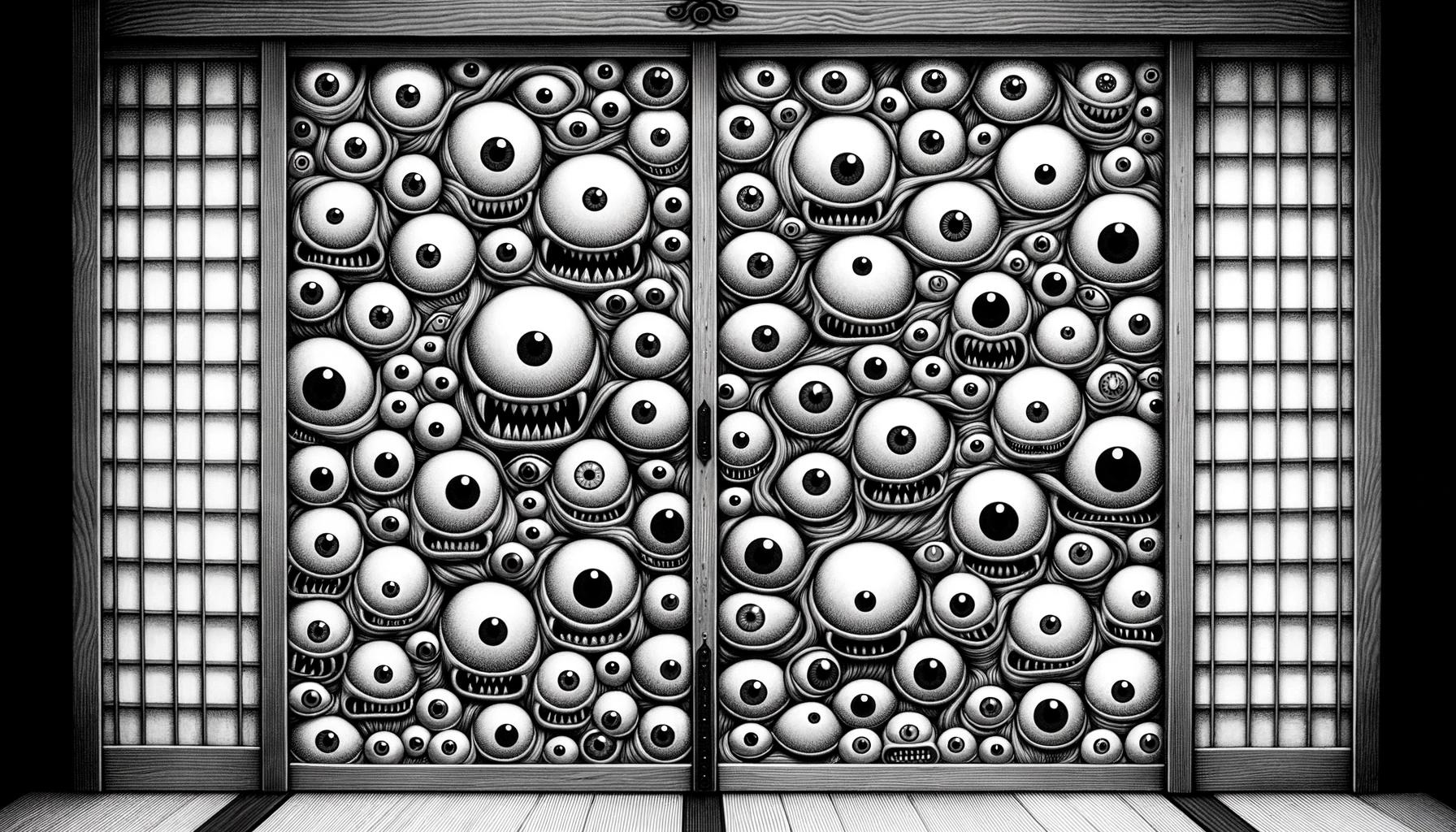
The Mokumokuren yokai is a fascinating entity in Japanese folklore. It takes the form of ghostly eyes that appear on the paper sliding doors known as shōji. These eyes observe everything happening inside a house, creating an unsettling feeling.
Although the Mokumokuren itself is not dangerous, its presence can indicate a larger infestation of yokai. In this article, we will delve into the origins, cultural significance, encounters, protective measures, and media representations of the Mokumokuren yokai, as well as explore its connection to other intriguing yokai entities in Japanese folklore.
The Origins and History of Mokumokuren
Mokumokuren, a fascinating yokai, holds a rich history and intriguing origins deeply rooted in Japanese folklore. Exploring the mythical tales and legends surrounding this enigmatic entity sheds light on its profound cultural significance and influence in art and literature.
Mythical Tales and Legends Surrounding Mokumokuren
Within the realm of Japanese folklore, a myriad of tales and legends intertwine to reveal the mysterious essence of Mokumokuren. These captivating stories recount encounters with ghostly eyes peering through shōji screens, sending shivers down the spines of those who witness this supernatural phenomenon.
The origins of Mokumokuren can be traced back to a tale about a thrifty merchant seeking refuge in an abandoned house, instead of staying at an inn. Startled during the night, the merchant discovered a shōji screen almost entirely covered with multiple eyes fixated upon his presence.
Rather than succumbing to fear, the cunning merchant fearlessly tore out the eyes and sold them to a local ocular surgeon, showcasing his resourcefulness born from frugality.
Another bone-chilling story recounts the encounter of a brave traveler with a Mokumokuren.
Despite the yokai’s presence, the traveler chose to spend the night in the same house. To evade the watchful gaze of the spirit, the traveler wrapped their head with a blanket while sleeping.
However, upon awakening, they were horrified to discover their own eyes ruthlessly plucked out, evidencing the power and malevolence of the Mokumokuren.
Cultural Significance of Mokumokuren in Japanese Society
Mokumokuren’s presence within Japanese society holds deep cultural significance. Being aware of its existence instills a sense of unease and serves as a warning sign of a potential infestation of more yokai.
This supernatural entity has become deeply ingrained in the collective consciousness, symbolizing the enigmatic and hidden elements of the human experience.
Furthermore, the tales and myths surrounding Mokumokuren provide valuable insight into traditional Japanese values, such as resourcefulness, bravery, and resilience.
These stories serve as moral lessons, emphasizing the importance of confronting and overcoming fears in the face of adversity.
Influence of Mokumokuren in Art and Literature
Mokumokuren’s eerie presence and mysterious allure have captivated artists and writers throughout history. Its depiction in various forms of artistic expression, including paintings and illustrations, have helped immortalize this yokai in Japanese art.
Toriyama Sekien, a renowned artist and folklorist, has contributed to the visual representation of Mokumokuren and other yokai in his creative works.
Furthermore, the influence of Mokumokuren extends into the realm of Japanese literature, with writers drawing inspiration from its chilling presence to craft intriguing narratives.
Through poetry, short stories, and novels, authors have explored the psychological impact of encountering a Mokumokuren and the deeper symbolisms associated with this eerie entity.
- Mythical Tales and Legends Surrounding Mokumokuren
- Cultural Significance of Mokumokuren in Japanese Society
- Influence of Mokumokuren in Art and Literature
Types of Yokai Associated with Mokumokuren
The Mokumokuren yokai is not the only supernatural entity that inhabits the mystical world of Japanese folklore.
There are other yokai beings closely linked to the Mokumokuren, each with its unique origins and characteristics.
Tsukumogami: Inanimate Objects Turned Yokai
Within the realm of yokai, a particular category known as tsukumogami stands out. Tsukumogami are inanimate objects that, after reaching a certain age, gain a sentient existence and transform into yokai.
These objects, which were once useful in everyday life, become imbued with supernatural powers and exhibit mischievous or vengeful behavior.
Common examples include the chōchin lantern, kanzashi hairpin, zōri sandals, and other household items such as teapots and umbrellas.
Tsukumogami associated with the Mokumokuren are believed to work in conjunction, forming an eerie alliance that can wreak havoc in homes.
Other Yokai Entities Linked to Mokumokuren
In addition to tsukumogami, several other yokai entities have connections to the enigmatic Mokumokuren. While specific details about these yokai may be scarce, their existence is mentioned in folklore and various texts.
- Abumi-Guchi
- Aka-Manto
- Hinaenma
- Hōnengyo
Although further information regarding these yokai is not provided, their inclusion suggests a larger world of supernatural beings interwoven with the mysterious presence of the Mokumokuren.
Understanding the Intricate Yokai Hierarchy
The realm of yokai in Japanese folklore is vast and diverse, with a complex hierarchy that defines the relationships between different entities. Understanding this intricate yokai hierarchy is crucial to comprehending the significance and role of the Mokumokuren.
At the top of the hierarchy are powerful entities like oni, tengu, and yūrei, known for their formidable abilities and influence. Below them are various categories of yokai, including tsukumogami and other supernatural creatures, each with its own specific traits and purposes.
The Mokumokuren, with its unique characteristics and association with other yokai, occupies its place within this intricate hierarchy.
By unraveling the layers of the yokai hierarchy, we can gain a deeper understanding of the significance of the Mokumokuren and its place in the rich tapestry of Japanese folklore.
Mokumokuren Encounters and Experiences
Mokumokuren, the enigmatic yokai with its ghostly eyes, has been at the center of numerous haunting tales and spine-chilling sightings. These accounts have been passed down through generations, captivating the imaginations of those who have experienced the presence of this mysterious creature.
Haunting Tales of Mokumokuren Sightings
In the darkest corners of Japanese folklore, haunting tales of Mokumokuren sightings abound. Witnesses have described the eerie sight of countless eyes peering through the shōji, their gaze fixated on unsuspecting residents.
These encounters leave a lasting impression, evoking a sense of unease and fear in those who become aware of the yokai’s watchful presence.
Stories are told of individuals who wake in the dead of night to find their entire living space transformed into a sea of ghostly eyes. Others claim to have witnessed the eyes vanish as soon as they become aware of them, leaving them questioning their own sanity.
These spine-tingling accounts demonstrate the powerful impact Mokumokuren has on those who encounter it.
Personal Testimonies and Supernatural Experiences
Numerous personal testimonies provide a glimpse into the supernatural experiences associated with Mokumokuren. Ordinary individuals find themselves at the center of inexplicable occurrences, leading them to believe that otherworldly forces are at play.
Witnesses often describe a feeling of being constantly observed, their every move monitored by the unforgiving gaze of the yokai’s eyes.
Some claim to have witnessed objects moving on their own, shadows flickering in the periphery, and unexplained whispers echoing through their homes. These encounters can have a profound effect on one’s psyche, leaving individuals questioning their own reality and struggling to find rational explanations for the inexplicable phenomena they’ve experienced.
Psychological Impact and Cultural Perceptions
Mokumokuren’s existence goes beyond mere folklore; it has ingrained itself within Japanese culture, influencing the way people perceive the supernatural. The psychological impact of encountering this yokai can instill a deep-rooted fear, prompting individuals to seek spiritual protection and engage in rituals to ward off its presence.
Cultural perceptions surrounding Mokumokuren vary. While some view its presence as a malevolent omen, others interpret it as a reminder to respect the spiritual realm and maintain harmony with the yokai world.
This duality reflects the intricate relationship between humans and yokai, adding to the captivating allure of Mokumokuren within Japanese folklore and popular culture.
Protective Measures and Warding Off Mokumokuren
Protecting one’s home from the presence of Mokumokuren and associated yokai is an important concern in Japanese folklore. Here are various methods that have been traditionally employed, as well as modern approaches to address infestations:
Traditional Rituals and Spiritual Practices
In ancient times, people turned to spiritual rituals to ward off Mokumokuren and other malevolent yokai.
These rituals often involved the use of sacred chants, purification ceremonies, and the burning of special incense. Talismans and amulets were also considered powerful tools in protecting against supernatural entities. These traditional practices aimed to create a spiritual barrier and maintain harmony between the human and spirit worlds.
Folk Remedies and Superstitions
Over the years, several folk remedies and superstitious beliefs have emerged to counter the influence of Mokumokuren. Some households place protective symbols, such as paper charms or talismanic paintings, on their doors and windows to deter yokai.
Others hang sacred herbs, like mugwort, or arrange salt in specific patterns to create barriers against unwanted spirits. The belief in the power of these practices is deeply rooted in Japanese folklore and continues to be observed by certain individuals and communities.
Modern Approaches to Addressing Mokumokuren Infestations
In modern times, with the advancement of technology, alternative approaches have been developed to address Mokumokuren infestations. Specialized paranormal investigators, often employing electronic ghost-catching devices and infrared cameras, help identify and neutralize yokai presence in homes.
Additionally, professional exorcists and spiritual mediums provide their expertise and services to cleanse and rid households of malevolent spirits. These contemporary methods combine ancient wisdom with innovative tools to combat the enduring presence of Mokumokuren and associated yokai.
Mokumokuren in Pop Culture and Media
Mokumokuren, with its eerie and captivating presence, has found its way into various forms of popular culture and media. From art and literature to films and contemporary entertainment, this yokai continues to intrigue and captivate audiences worldwide.
Depictions of Mokumokuren in Art, Literature, and Film
The haunting image of Mokumokuren has inspired many artists, writers, and filmmakers to depict its ghostly eyes in their creations. Paintings, illustrations, and traditional woodblock prints showcase the ethereal nature of this yokai, often emphasizing its watchful gaze and the element of mystery it brings to the setting.
Literature has also been greatly influenced by Mokumokuren. Tales and novels featuring yokai often include encounters with this spectral entity, emphasizing its role as a harbinger of supernatural events or a symbol of impending danger.
Its presence adds an element of suspense and unease to the narrative, leaving readers enthralled by its watchful eyes.
Film has brought Mokumokuren to life in captivating ways. Both animated and live-action movies have incorporated this yokai into their stories, showcasing its ability to instill fear and curiosity in viewers.
From classic Japanese horror films to modern adaptations, Mokumokuren’s ghostly eyes continue to be a prominent feature, creating visually stunning and spine-chilling experiences for audiences.
Yokai Influences in Contemporary Entertainment
Mokumokuren, along with other yokai, has left a lasting impact on contemporary entertainment.
Video games, manga, and anime often feature yokai-inspired characters and storylines, with Mokumokuren making appearances in various forms. Its unique visual design and supernatural attributes have made it a favorite subject for artists and creators in the world of anime and manga.
Furthermore, Mokumokuren’s influence extends beyond traditional media. It has become a popular theme in merchandise, including clothing, accessories, and collectibles. The iconic image of the ghostly eyes has been incorporated into fashion designs, bringing a touch of Japanese folklore and mystique to everyday life.
Online Communities and Social Media Engagement
The internet has provided a platform for enthusiasts of Japanese folklore and yokai to come together and share their love for Mokumokuren and other supernatural beings. Online communities and forums dedicated to yokai allow people to exchange stories, artwork, and information about this fascinating creature.
Through social media platforms, fans can interact with artists, writers, and experts in the field who continually explore and interpret the world of yokai. Hashtags, such as #Mokumokuren and #YokaiEncounters, enable individuals to connect and engage in discussions, creating a virtual space where the fascination with Mokumokuren and Japanese folklore can thrive.
- Mokumokuren’s haunting presence is depicted in various art forms, including paintings, illustrations, and woodblock prints.
- This yokai’s influence is seen in literature, where its watchful eyes heighten suspense and unease in tales featuring supernatural entities.
- Mokumokuren has made appearances in both animated and live-action films, bringing a visually stunning and chilling element to the storytelling.
- Contemporary entertainment, such as video games, manga, and anime, draws inspiration from yokai, with Mokumokuren becoming a popular subject.
- The internet and social media provide platforms for yokai enthusiasts to connect, share stories, and engage in discussions about Mokumokuren and other supernatural beings.
As Mokumokuren’s presence in pop culture and media continues to grow, its ghostly eyes will remain an enduring symbol of Japanese folklore and a source of intrigue for generations to come.
Exploring Other Yokai and Their Connection to Mokumokuren
In addition to the Mokumokuren yokai, Japanese folklore is filled with various other intriguing yokai entities that hold a unique connection to this ethereal being. Let us delve into these captivating creatures and unravel the mysteries they bring.
Gitsune, Nyūdō, Kozō, and Other Yokai Entities
One group of yokai entities connected to Mokumokuren includes Gitsune, Nyūdō, Kozō, and several others. Gitsune, known as “fox spirits,” possess shape-shifting abilities and are often associated with wisdom and trickery.
On the other hand, Nyūdō are yokai depicted as wandering monks, capable of displaying supernatural powers. Kozō are childlike yokai entities who are mischievous and can bring both good fortune and chaos.
The Intriguing World of Japanese Yokai Folklore
Japanese folklore is renowned for its rich tapestry of yokai entities that span an immense spectrum of forms and abilities. These paranormal creatures captivate the imagination with their supernatural powers, personalities, and roles within Japanese culture.
From the spectral presence of Yūrei to the formidable and monstrous Oni, the world of yokai folklore is an endless source of fascination and intrigue.
Unraveling the Mysteries of Oni, Tengu, and Yūrei
Oni, Tengu, and Yūrei are prominent yokai entities that often intertwine with the realm of Mokumokuren.
Oni, known as ogre-like creatures, embody evil and wickedness, sometimes depicted with distinctive bestial features and wielding menacing clubs. Tengu, on the other hand, are legendary bird-like beings associated with martial arts and knowledge.
Meanwhile, Yūrei are vengeful spirits of the deceased, often depicted with a white burial kimono and long disheveled hair.
The Connection Between Yokai Entities
Exploring the connection between yokai entities like Oni, Tengu, and Yūrei reveals a fascinating web of folklore. These intricate relationships often intertwine and influence one another, creating a dynamic and interconnected yokai ecosystem within Japanese mythology.
Understanding these connections provides deeper insights into the cultural significance and portrayal of Mokumokuren and its fellow yokai counterparts.
The Intricate Yokai Hierarchy
Within the realm of yokai, a complex hierarchy exists, with each entity occupying a specific rank and role. This hierarchy takes into account factors such as power, influence, and association with specific elements or concepts.
By examining the intricate yokai hierarchy, we can gain a better understanding of Mokumokuren’s place within this fascinating world.
- The hierarchy of yokai entities
- Ranking based on power and influence
- Association with elements and concepts
These aspects define the role and significance of Mokumokuren and its connection to other yokai entities in Japanese folklore.
.











